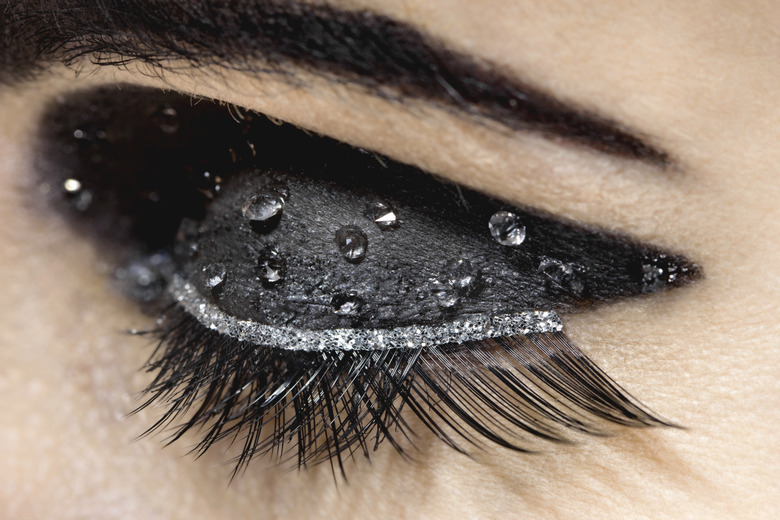Makeup Science Projects
Young girls enjoy playing in makeup but so do adults. In fact, scientists help create makeup that lasts longer and wears better than previous products. Help interest girls in science by letting them conduct science experiments about makeup. Although you might think that makeup science experiments might be expensive, contact makeup companies or ask beauty counter representatives for samples instead of paying for products yourself.
Melting Lipstick
Melting Lipstick
Conduct a science experiment to determine which lipstick will bleed the most on your lip lines. Cut off a small piece of the lipstick, place it on a piece of paper and smear it around with a toothpick or wooden stick. Heat the paper over a hot plate, and notice what happens to the lipstick. If the lipstick dye bleeds into the oil around the edge of the paper, it indicates that the color will bleed into the lip lines of the wearer. Compare the results between brands to determine if expensive brands hold up better than less expensive drug-store brands.
Removing Mascara
Removing Mascara
Women wear waterproof mascara to keep their eyes looking good while swimming or to protect their makeup in case they cry. Although the mascara looks good, removing it can be difficult. Test different types of mascara with different types of cleaners to determine which brands are easier or more difficult to remove. Instead of applying the mascara to your eye lashes. Swipe the wand across your hand instead and then use cleaners according to the manufacturer's instructions. Record things such as how long it took to remove the mascara, how easily it came off and if you had to reapply the cleaners. Compare the ingredients in the mascaras to the ingredients in the cleaners to see if there are any similarities.
Long-Lasting Lipsticks
Long-Lasting Lipsticks
Some lipsticks claim to be long-lasting and advertise that you can even eat and drink without needing to reapply the lipstick. Conduct a test to see which lipsticks last the longest. Apply a different lipstick to testers and take their pictures with a close-up view of their lips to show the amount of lipstick on their lips. Expose each tester to the same variables, such as eating a messy food, drinking hot and cold liquids and rubbing their lips on a tissue. Inspect the tissue for any lipstick residue and check the utensils and cups. Take a picture of the tester at the end of the experiment and compare the pictures to see if the lipstick lasted long.
Survey
Survey
Conduct a psychological test about how females feel about makeup. Ask survey questions such as how they feel about themselves without makeup and how they feel with makeup on, when they began wearing makeup and if there are any cultural influences on what makeup they wear or how it is applied. Measure the tester's opinions to pictures of celebrities with and without makeup. Consider asking women who normally wear makeup to go without makeup for a week and ask them how they feel and how people treated them. Gather your results and analyze the data to see if you can generalize about women and makeup based upon the subject's age or culture.
Cite This Article
MLA
Thomason, Lauren. "Makeup Science Projects" sciencing.com, https://www.sciencing.com/makeup-science-projects-12748297/. 27 March 2011.
APA
Thomason, Lauren. (2011, March 27). Makeup Science Projects. sciencing.com. Retrieved from https://www.sciencing.com/makeup-science-projects-12748297/
Chicago
Thomason, Lauren. Makeup Science Projects last modified August 30, 2022. https://www.sciencing.com/makeup-science-projects-12748297/




